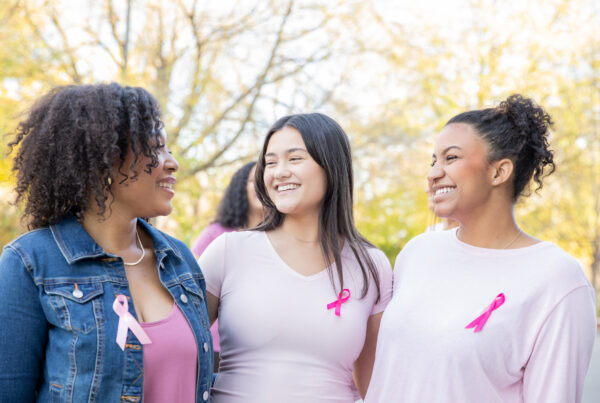Written by: Celest Austin, MD, PhD
Neurodivergent individuals possess a wide array of strengths; for example, some dyslexic individuals have superior visual spatial abilities (von Karolyi et al., 2003). Despite this knowledge, conventional approaches frequently use deficit-based approaches that focus more on the impairments of neurodivergent individuals rather than their strengths (McDonald & Machalicek, 2013). This deficit-based approach may be based on the belief that once the neurodivergent individual can be “fixed” and made “normal.” As a result, this approach can be devastating to a neurodivergent person’s self-esteem, self-perception, and confidence (Urbanowicz et al., 2019, van der Cruijsen & Boyer, 2020), especially when this approach begins during childhood (Den Houting et al., 2021). It can also lead to increased masking, in which a neurodivergent person hides their authentic self to fit into society – leading to unhappiness and wide array of mental health issues (Lawson, 2020, van Heijst & Geurts, 2015).
Strengths-Based Approach is Neurodiversity-Affirming The neurodiversity paradigm is based on the idea that neurological differences, like dyslexia, are normal variants of society rather than disorders. According to this paradigm, perceived “deficits” of neurodivergent individuals are not the fault of the individual but due to the lack of appropriate supports in society. Thus, a neurodiversity-affirming approach focuses on the strengths of the person, or a strengths-based approach (Wright et al., 2020).
A strengths-based approach is individualized and leverages the unique cognitive and/or communication style of the neurodivergent individual to build new skills. For example, in a classroom a highly visual learner, such as an autistic student, might require and be provided with pictures to understand a lesson on planets. A strengths-based approach can be used in many different environments, whether it is at school, work, or home. Studies have shown that a strengths-based approach can increase happiness, confidence, and self-determination for neurodivergent individuals (Courchesne et al., 2015; Dykshoorn & Cormier, 2019; Huntley et al., 2019; Schutte & Malouff, 2019).
Steps to a Strengths-Based Approach There are many ways to adopt a strengths-based approach. Whatever path is taken, it should nurture the individual’s strengths and personal goals. For young children, whose personal goals can be difficult to assess, their goals should not focus on “looking normal” but on gaining skills for self-advocacy and confidence. For example, rather than requiring a young child to sit through a 15-minute morning meeting (that might be too difficult for them), they might be taught to ask for a short break and allowed to get up for a few minutes. The following four characteristics are important to remember when embracing a strengths-based approach.
- It starts with mindset. A strengths-based approach begins with the mindset of the people in the child’s ecosystem (e.g., educators, parents, grandparents, practitioners). A strengths-based approach focuses on a child’s strengths rather than their possible challenges and differs from a deficit-based approach in that a deficit-based approach relies on discovering what a child cannot do while a strengths-based approach relies on finding out what a child can do. For example, in a classroom where lessons are primarily delivered auditorily, students who are visual learners may be perceived as having a deficit. A deficit-based approach may involve increasing exposure of auditory lessons to the visual learner with the goal that they will eventually “adapt.” Conversely, a strengths-based approach might include the use of visual aids within the lessons to support visual learners.
- Stay Curious. Remaining curious about a child’s unique strengths and areas of support is an important step in adopting a strengths-based approach. This means observing the child’s behaviors and emotional wellness at different times and in a variety of settings. Conducting observations can reveal sensory needs and uncover new and unique strengths. Information from these observations can increase understanding of and connection with the child as well. The goal of staying curious is to identify and build on the strengths of neurodivergent individuals.
- Lighten the Load. When considering a child’s unique strengths and needs, make sure to identify any sensory needs. Up to 95% of neurodivergent individuals have sensory differences (Hazen et al., 2014). It is important to be aware of how different environments may affect the child (e.g., their mood or behavior). In some cases, neurodivergent children may be hypersensitive to certain sensory input (i.e., noise, lighting, sound etc.) but less sensitive to other sensory inputs. A detailed log that includes the setting and sensory inputs of when a child feels overwhelmed can help professionals better support the child, and identify what situations tend to be problematic for the child. Attending to the sensory environment, or other needs of a child, can create a safe environment in which a child can thrive.
- Listen to the Neurodivergent Community. It is important to listen to the neurodivergent community for guidance and further understanding. Neurodivergent experts can also share their perspectives to help build connections with neurodivergent people. Researchers are beginning to incorporate the perspective of neurodivergent individuals in their research, as these voices are valuable to our understanding of different neurotypes. By combining science with neurodivergent voices, we can better support neurodivergent individuals in all settings.
Strengths-based approaches can help neurodivergent individuals become better self-advocates and identify their own strengths leading to increased confidence in their abilities.
References
Courchesne, V., Meilleur, A. A., Poulin-Lord, M. P., Dawson, M., & Soulières, I. (2015). Autistic children at risk of being underestimated: school-based pilot study of a strength-informed assessment. Molecular Autism, 6, 1-10.
Den Houting, J., Botha, M., Cage, E., Jones, D. R., & Kim, S. Y. (2021). Shifting stigma about autistic young people. The Lancet Child & Adolescent Health, 5(12), 839-841.
Dykshoorn, K., & Cormier, D. (2019). Autism spectrum disorder research: Time for positive psychology. Autism Open. Access, 9(1), 1–8.
Huntley, M. K., Black, M. H., Jones, M., Falkmer, M., Lee, E. A. L., Tan, T., … & Girdler, S. (2019). Action briefing: Strengths-based approaches. Autistica.
Lawson, W. (2020). Adaptive morphing and coping with social threat in autism: An autistic perspective. Journal of Intellectual Disability Diagnosis and Treatment, 8(3), 519–526.
McDonald, T. A., & Machalicek, W. (2013). Systematic review of intervention research with adolescents with autism spectrum disorders. Research in Autism Spectrum Disorders, 7(11), 1439–1460.
Schutte, N. S., & Malouff, J. M. (2019). The impact of signature character strengths interventions: A meta-analysis. Journal of Happiness Studies, 20, 1179–1196.
Urbanowicz, A., Nicolaidis, C., Houting, J., Shore, S. M., Gaudion, K., Girdler, S., & Savarese, R. J. (2019). An expert discussion on strengths-based approaches in autism. Autism in Adulthood, 1(2), 82–89.
van der Cruijsen, R., & Boyer, B. E. (2020). Explicit and implicit self-esteem in youth with autism spectrum disorders. Autism, 25(2), 349–360.
van Heijst, B. F., & Geurts, H. M. (2015). Quality of life in autism across the lifespan: A meta-analysis. Autism, 19(2), 158–167.
von Karolyi, C., Winner, E., Gray, W., & Sherman, G.F., (2003). Dyslexia linked to talent: Global visual-spatial ability. Brain and Language, 85, 427-431.
Wright, B., Spikins, P., & Pearson, H. (2020). Should autism spectrum conditions be characterised in a more positive way in our modern world?. Medicina, 56(5), 233.
Image Credit: Storyblocks, CC0












